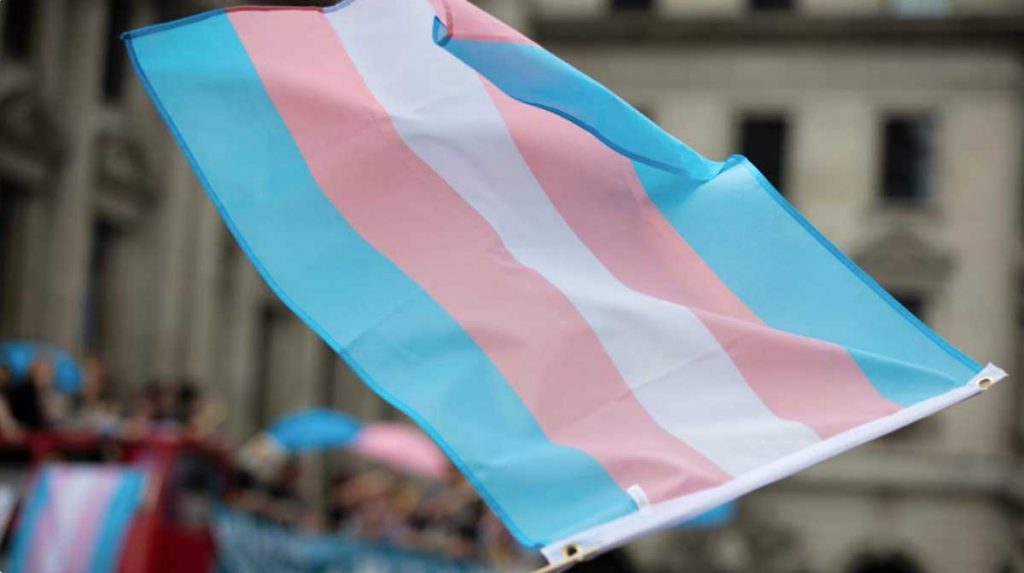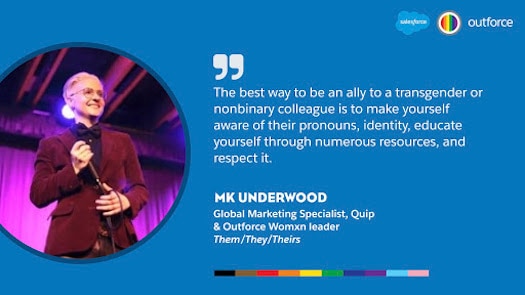5 Ways To Support the Transgender Community at Work

Not only is Pride a time of celebration for all sexual orientations and gender identities, but it also presents an opportuntiy to raise awareness around discrimination and violence, experienced at disproportionately high rates for transgender people of color.
Millennials, who will make up 75% of the workforce by 2025, are more than two times more likely to identify as LGBTQ+ than previous generations. In addition, 12% of millennials identify as transgender or nonbinary. However, there is still significant work to be done to ensure a feeling of support and inclusion in the workplace. Recent events in the U.S. underscore what it is to be Black in America and around the world. We are devastated by the recent murders of Tony McDade , Nina Pop , Dominique “Rem’mie” Fells, and Riah Milton — four Black transgender individuals, among many others. In 2019 alone, 26 transgender or gender nonconforming people were fatally shot or killed by other violent means and 91% of them were Black women.
It is our responsibility to speak out against systemic racism and hate, and support the Black community. Pride is, and has always been, an intersectional celebration, and why now more than ever, our LGBTQ+ community needs to show up for Black rights. Black lives matter. Black LGBTQ+ lives matter. Black transgender lives matter.
In that spirit, we at Salesforce, celebrate the courage to live openly and strive to create a workplace where everyone feels they can bring their authentic self to work. While we acknowledge there is more work to be done, let’s take a closer look at a few ways we can all support our transgender and nonbinary colleagues at work right now:
1. Use inclusive language
Word choice matters. We acknowledge language is fluid and the list of terms here does not encompass the full range of identities of the global transgender community. Here are some key terms to understand:
- Gender: Gender refers to the traditional or stereotypical roles, behaviors, activities, and attributes a given society considers appropriate for men and women.
- Sex: Refers to the designation of a person at birth as either “male” or “female” based on their anatomy (e.g. reproductive organs) and/or their biology (e.g. hormones).
- Transgender: An umbrella term for people whose gender-identity is different from their sex assigned at birth. For example, you are assigned male at birth but identify as a woman.
- Cisgender: A person whose self-identity conforms with the gender assignment of their biological sex. For example, you are born male and identify as a man.
- Gender identity: A person’s innate, deeply-felt psychological identification as a man, woman, or any other gender.
- Sexual orientation: A term used to refer to who you’re attracted to and/or want to have romantic relationships with. Can be with the opposite sex or gender, the same sex or gender, or to both sexes or more than one gender identity.
- Gender expression: Gender expression refers to the external manifestation of a person’s gender identity, which may or may not conform to socially-defined behaviors and characteristics typically associated with being either masculine or feminine.
- Gender diverse: A general term for individuals who do not identify with the traditional “male” and “female” categories; these individuals may see themselves as being both male and female, neither male nor female, or as falling completely outside these categories.
- Transitioning: The process some transgender people go through to begin living as the gender with which they identify, rather than the sex assigned to them at birth. This may or may not include hormone therapy, sex affirmation surgery, and other medical procedures. The exact steps involved in transitioning varies from person to person.
- Nonbinary: Recognizes a spectrum of gender identities that are not exclusively masculine or feminine and can exist outside of the (accepted cultural) gender binary.
- Gender Nonconforming (GNC): Denoting or relating to a person whose behavior or appearance does not conform to prevailing cultural and social expectations about what is appropriate to their gender.
2. Be mindful of pronouns
Be mindful of pronouns when referring to individuals. As a best practice, be sure to share your pronouns and ask others for their pronouns upon introduction, as opposed to assuming. In addition, when telling stories about someone in the past, be sure to use and respect their present self-identified name and pronouns.

At Salesforce, our U.S.-based employees are able to voluntarily self-identify their pronouns in their Workday profiles at any point during their time at the company. We are working to expand this across our global regions.
As an anonymous member of Transgender and Gender Nonbinary subgroup of Outforce, our employee resource group (ERG) of allies in diversity of sexual orientation and gender identity, shares: “People often take mental shortcuts when deciding what pronouns to use. However, not everyone identifies the way that they look. Having my pronouns front and center in all of our systems reduces the burden of constantly having the pronoun conversation, and calling attention to my identity.”
3. Lead with respect and courtesy
Regularly highlight your transgender colleagues by amplifying their work and their voices, embracing their authenticity, and encouraging intersectionality within the workplace.
- Practice allyship by asking thoughtful questions, listening to members of the community, showing up, and speaking up. If your company has a LGBTQ+ ERG, reach out and learn how you can get involved.
- Avoid asking ask “what stage” a transgender person is in their transition. This is a personal journey, and they will share details with you if they feel that is right. Additionally, there are no set “stages,” as every transition is unique to the individual.
- Avoid referring to sexual orientation or gender identity as “a choice.” Being transgender is not a choice. Someone likely would not choose to live their life in a way that risked facing daily abuse, discrimination, and prejudice.

“The best way to be an ally to a transgender or nonbinary colleague is to make yourself aware of their pronouns, identity, educate yourself through numerous resources, and respect it. As a trans individual, it can be very scary to call folks out for using the incorrect pronoun. A true ally is proactive, holds team leaders and colleagues accountable when they misgender someone and help to educate the team by insisting on diversity training,” said MK Underwood, Global Marketing Specialist, Quip and Outforce Womxn leader at Salesforce.
4. Offer gender inclusive policies and benefits
Here at Salesforce, we strive to build the most comprehensive and inclusive policies, benefits, and procedures. While we recognize there is much more to be done to support the community, some of the inclusive best practices we offer include:
- Gender identity and expression is a protected characteristic in our anti-discrimination and anti-harassment policies
- Inclusive healthcare coverage for transgender and gender nonconfirming employees, including fertility, surrogacy, adoption, parental leave, gender affirmation surgery options, and more.
- Education on gender identity and expression, the issues affecting the transgender community, and how to demonstrate respect toward the community
- Comprehensive benefits coverage for transitioning employees for U.S. employees
- Use of appropriate name and pronouns
- Pronouns included in email signatures
- An option to add your pronouns on your business cards
- To regularly examine and update all existing documents, policies, and procedures to remove all gender-specific language
- Access to gender-neutral and/or single-stall restrooms
- Transgender and Gender Nonconforming and Queer Womxn employee resource group (ERG) subgroups
5. Continue to educate yourself
It is our privilege and responsibility as humans to continue to educate ourselves about the communities outside of our own. We are all on a learning journey and it is this exploration that strengthens our collective culture inside and outside of our company.
An important note: before going to a member of the community to ask them questions about their particular affinity group, do the work as an ally to educate yourself first.
Here are some resources to get you started: check out Trans Lifeline, National Center for Transgender Equality, GLAAD, Out & Equal, and the Human Rights Campaign (to name a few), read books written by LGBTQ+ authors, and watch movies by LGBTQ+ directors.
At Salesforce, we are committed to advancing gender equality in the workplace and in society. If you’re interested in a career at Salesforce, visit our careers page.
